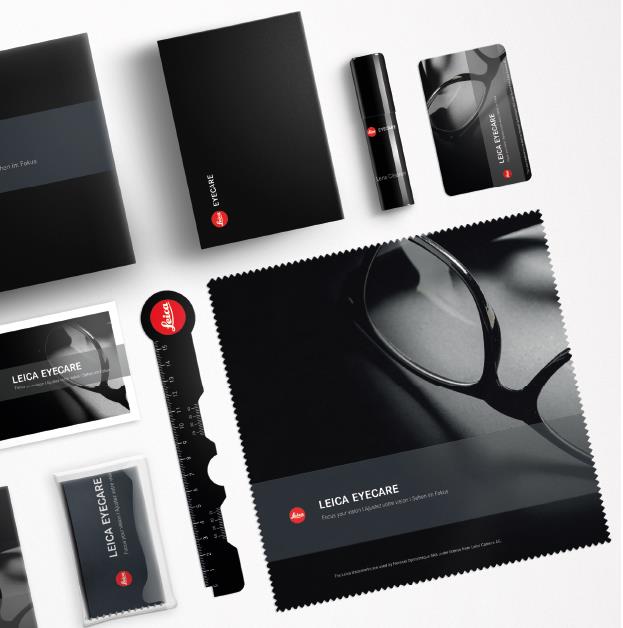Developments in digital technology in the ophthalmic lens sector have transformed the way practitioners think about prescription lenses.
Individualised lenses have become one of the key tools practitioners can use to create a bespoke experience for patients and there has been perhaps more technological development in measurement devices than any other.
Essilor used Optrafair to launch Visioffice X, the latest version of its in-practice measuring system. The device combines fitting, physiological and behavioural measures to construct what Essilor describes as a ‘complete vision diagnostic’ for patients.
Lyndsay Dickens, head of Essilor bespoke, said: ‘This model offers brand new functionalities to enhance the measurement journey making it more impressive, interactive and comfortable for the patient.’
Three technological developments are central to the device, says the company. A new measurement algorithm called Eyecode determines the exact position of the eye’s rotation centre, which Essilor says gives wearers clearer vision based the eye’s anatomy. In addition, data on near vision behaviour data recreates familiar close-up tasks to understand how patients naturally use their eyes to provide them with a better and accelerated adaptation to their new lenses. Lastly, H3D analysis captures the natural posture of the patient in far vision to ensure a better comfort.
Markers placed on the frame offer a higher precision of measurements to one tenth of a millimetre or degree, while a precise result is achieved though optimising the measurement protocol, multiple cameras working simultaneously, and the ability to take measurements through tinted lenses.
There is a big element of theatre involved with Visioffice X – right from the musically choregraphed moment the tall, slimline model rotates from the screen panel to the business side of the device housing the camera systems. The practitioner uses the machine in conjunction with a tablet and the patient is guided by audible instructions and lasers that mark standing distances.
‘The patient is now fully involved before, during and after the new process, with animated visuals to guide and engage them, helping to educate them in lens quality and the best visual solution for their needs,’ says Dickens. She adds Visioffice X is aimed at the best independent opticians in the UK and Essilor aims to create strong partnerships with stockists. As part of these relationships, Essilor will provide the practice with marketing support focused on the bespoke nature of the system.
Brand awareness
The gravitas of big name brands in the spectacle lens sector has long been a hot topic of discussion. Some feel patients pay little attention to what brand a lens is and let the dispensing optician lead the discussion on suitability, but others maintain that having a recognisable name from outside of ophthalmic lenses boosts credibility and desirability for the customer.
There is enough room in the market for both approaches and Dunelm Optical covers both bases with the launch of Leica ophthalmic lenses into the UK market. Many place Leica at the top of the tree as a camera, lens and sport optics manufacturer, so its spectacles lenses are likely to be well-received among enthusiasts.
Tanya Storey, commercial manager for lens and laboratory at Dunelm Optical, the exclusive distributor, told Optician: ‘Leica Eyecare’s engineers are continuously striving for the limits of what is technically feasible and for them optics is a passion. The goal is to ensure the uncompromising performance of optical lenses and to offer spectacle wearers the perfect viewing experience.’

Dunelm Optical’s Leica Eyecare range
The new Leica Eyecare range includes performance single vision and progressive lenses, along with various options for digital lifestyles and driving. Leica says the optical precision of its photographic and sport optics is reflected in the new lens collection and was the first to offer powers in steps of 0.125D while maintaining manufacturing tolerances of ±0.10D. A version of the company’s AquaDura performance coating, used for many years on its binoculars and optics, will also be used.
Storey added: ‘Lenses are an integral part of the Dunelm Optical portfolio; the Leica Eyecare brand is a supreme product and an excellent addition to our lens collection. Leica Eyecare’s demand for perfection in both manufacturing and quality ensures the best viewing experience for the lens wearer.’
One lens portfolio that does not have an issue with brand awareness is Transitions, a name that has long been the generic term for photochromic lenses among the general public. With new launch, Style Mirrors, the aim is increase awareness of the Transitions name in the fashion eyewear sector.

Transitions Style Mirrors
The company first made major moves into this area of the market in 2014 with the launch of its Graphite Green lens, then again in 2017 with the release of a four-colour line up named Style Colours.
Style Mirrors, offered by Essilor UK and BBGR, takes the fashion element one step further and is designed to be dispensed in a trend-led second pair of glasses, not every day spectacles like Style Colours. The lens features a mirror tint combined with a Transitions XTRActive lens and as such, still darkens behind the windscreen of a car, but never fades to fully clear. Four colours are available – blue, green, silver and gold. When indoors, the lenses have a light mirror flash, but this intensifies significantly when exposed to UV.
Lenses In Brief
Freeform lens production has not only brought significant improvements in optical performance for patients, but it has changed the way companies work on their portfolios.
Optik Mizen says it now develops its lenses like apps, with regular updates and improvements to core products. The latest update showed at Optrafair was the Equinox Digi, a new take on the company’s well-established Equinox 2.0 progressive. While studying the close zone on the Equinox 2.0, the company’s lens designers looked at ways it could be improved for patients who spend more time using their near vision – maybe those who spend most of the time indoors (either at home or work) or reading or working with digital devices. Although the new Digi variant enhances near vision, there is minimal compromise to distance viewing, says Optik Mizen.
You could almost understand if, after winning Lens Product of the Year at the 2018 Optician Awards, Caledonian Optical took a breather from looking at new ways of improving its ARC range of freeform lenses. But with the release of ARC Intero, the Aberdeen-based company has demonstrated that will not be the case. The new variant is focused on total UV protection and as such, features a new back-surface UV absorption layer.
Jai Kudo is the latest producer to enter specialist driving lens sector. Drivesense is available in progressive and single vision options and has the promised benefits of a tailored night vision zone for reduced fatigue in the dark and improved visual fields to widen field of view. The lens can also be personalised to allow for better vision of near vision items used in driving like the dashboard instruments and rear view and external mirrors.
